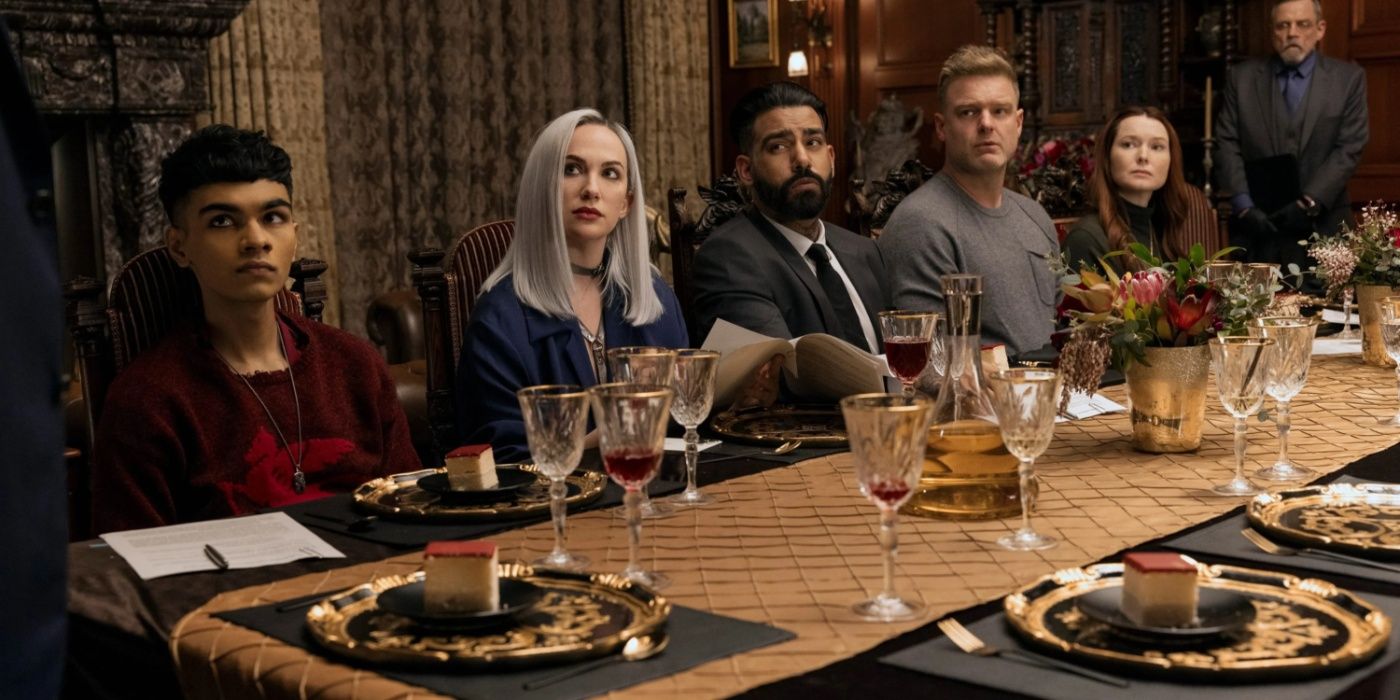The Fall of the House of Usher, the latest horror limited series by Mike Flanagan, draws inspiration from short stories and poems by Edgar Allan Poe. However, the series also appears to incorporate beliefs and mythology from another popular ancient society, the Ancient Egyptians. It deepens the themes and concepts within the series and from the author’s morbid works through the implementation of symbolism scattered throughout this ancient world and by expanding upon the portrayal of the supernatural deal-striking entity known as Verna.Following one of the world’s wealthiest families, The Fall of the House of Usher centers on this greedy and money-obsessed household that runs one of the largest pharmaceutical empires. The family seems to possess supernatural immunity, having avoided prosecution for numerous crimes, from dodging environmental protection laws to using bribery and violence on officials. Their most significant crime arises from marketing their painkillers as non-addictive with minimal withdrawal symptoms, which is far from the truth. By the finale, it comes to light that Roderick and his sister, Madeline Usher, struck a deal with a supernatural creature known only as Verna, revealed in a confession by Roderick to his life-long rival, Mr. Dupin. They agreed that when the deal reached its conclusion, the price of their actions would be deferred to the next generation, spelling an end to the Usher bloodline. Throughout these horrifying events, the series adds further depth by anchoring them within Ancient Egyptian mythology and symbolism, enriching the world’s meaning.One of the central messages in The Fall of the House of Usher is its critique of capitalistic exploitation and the assertion that actions have consequences, even for the wealthy. These themes and others in the series are underpinned by Ancient Egyptian beliefs and mythology. Notably, the Ancient Egyptians had a profound belief in eternal life after death, which played a central role in their religious and cultural practices. Season 1, Episode 6, “Goldbug,” features rich symbolism drawn from this ancient society. The episode title, “Goldbug,” takes inspiration from the imagery of the scarab beetle, which one of Roderick’s children, Tamerlane, uses as a company logo. This beetle served as a powerful and multifaceted symbol associated with various aspects of life, death, and rebirth. This is particularly fitting as the episode features a scene where Madeline discusses computerized consciousness mapping, which is her endeavor at achieving immortality and is something she strives for throughout the series.RELATED: Metroid Deserves the Netflix Castlevania Treatment
The Fall of the House of Usher, the latest horror limited series by Mike Flanagan, draws inspiration from short stories and poems by Edgar Allan Poe. However, the series also appears to incorporate beliefs and mythology from another popular ancient society, the Ancient Egyptians. It deepens the themes and concepts within the series and from the author’s morbid works through the implementation of symbolism scattered throughout this ancient world and by expanding upon the portrayal of the supernatural deal-striking entity known as Verna.
Following one of the world’s wealthiest families, The Fall of the House of Usher centers on this greedy and money-obsessed household that runs one of the largest pharmaceutical empires. The family seems to possess supernatural immunity, having avoided prosecution for numerous crimes, from dodging environmental protection laws to using bribery and violence on officials. Their most significant crime arises from marketing their painkillers as non-addictive with minimal withdrawal symptoms, which is far from the truth. By the finale, it comes to light that Roderick and his sister, Madeline Usher, struck a deal with a supernatural creature known only as Verna, revealed in a confession by Roderick to his life-long rival, Mr. Dupin. They agreed that when the deal reached its conclusion, the price of their actions would be deferred to the next generation, spelling an end to the Usher bloodline. Throughout these horrifying events, the series adds further depth by anchoring them within Ancient Egyptian mythology and symbolism, enriching the world’s meaning.
One of the central messages in The Fall of the House of Usher is its critique of capitalistic exploitation and the assertion that actions have consequences, even for the wealthy. These themes and others in the series are underpinned by Ancient Egyptian beliefs and mythology. Notably, the Ancient Egyptians had a profound belief in eternal life after death, which played a central role in their religious and cultural practices. Season 1, Episode 6, “Goldbug,” features rich symbolism drawn from this ancient society. The episode title, “Goldbug,” takes inspiration from the imagery of the scarab beetle, which one of Roderick’s children, Tamerlane, uses as a company logo. This beetle served as a powerful and multifaceted symbol associated with various aspects of life, death, and rebirth. This is particularly fitting as the episode features a scene where Madeline discusses computerized consciousness mapping, which is her endeavor at achieving immortality and is something she strives for throughout the series.
#Fall #Houses #Smallest #Easter #Eggs #Tie #Ancient #Popular #Mythology
Note:- (Not all news on the site expresses the point of view of the site, but we transmit this news automatically and translate it through programmatic technology on the site and not from a human editor. The content is auto-generated from a syndicated feed.))



